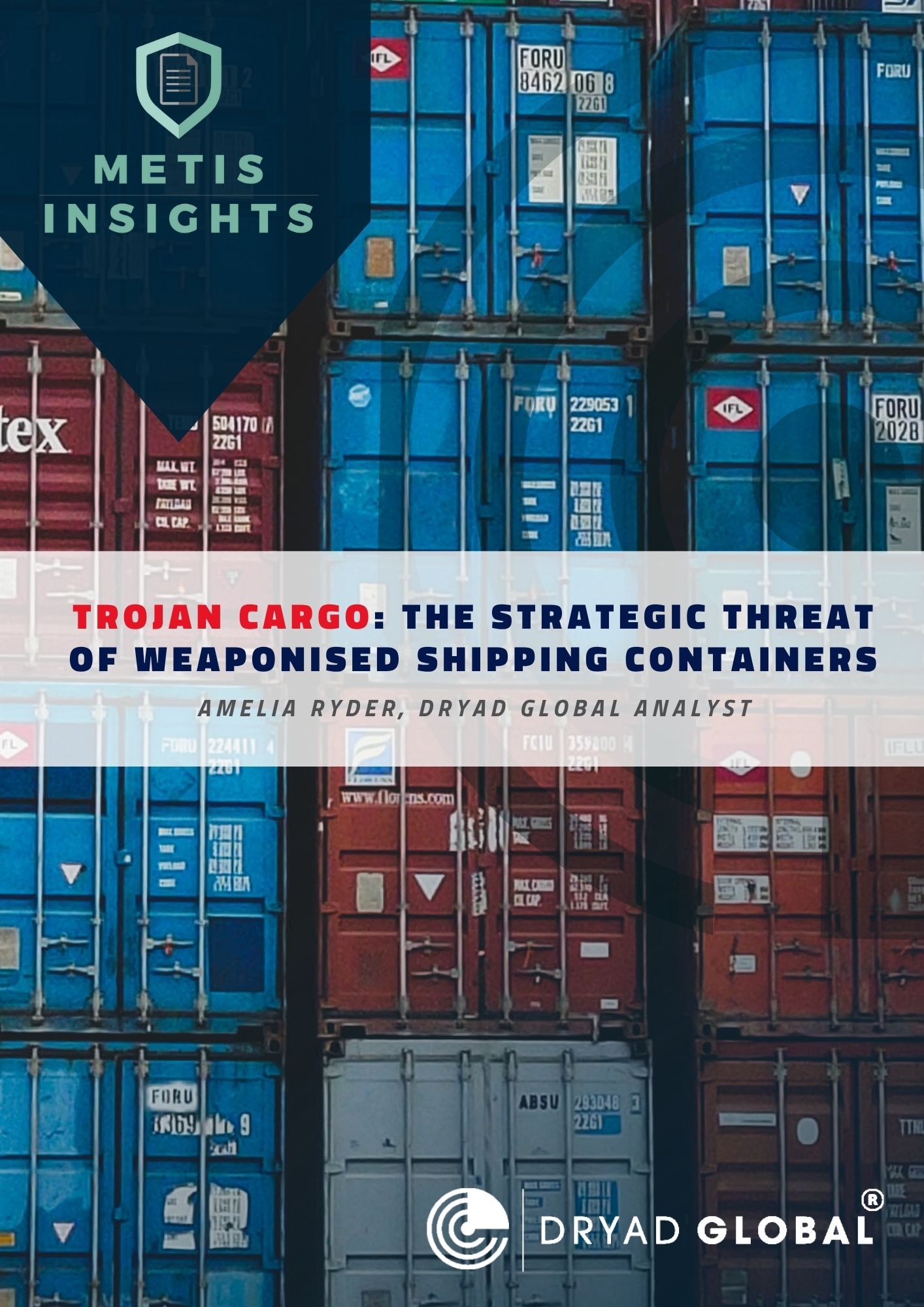Dryad Global’s new Metis Insights exposes the emerging threat of weaponised shipping containers and what it means for global port security.
How containerised drones are reshaping maritime security and global supply chain risk
On 1 June 2025, Ukraine executed a drone strike unlike any before: 117 AI-enabled FPV drones, hidden inside standard 40-foot shipping containers, were launched deep inside Russian territory in a coordinated operation dubbed Spider’s Web. The containers travelled thousands of kilometres across Russia, moved by unsuspecting civilian truck drivers. Once in position, remote triggers released drones that struck five regions—crippling nearly a third of Russia’s cruise missile bomber fleet.
This was not just a battlefield tactic. It was a signal to the world: civilian logistics infrastructure can now serve as covert weapons platforms.
Dryad Global’s latest Metis Insights report—Trojan Cargo: The Strategic Threat of Weaponised Shipping Containers—examines how this breakthrough in drone warfare has triggered an urgent new reality for ports, shipping lines, naval forces and insurers.
What is Trojan Cargo?
The concept of Trojan Cargo refers to the weaponisation of standardised commercial containers—an emerging form of hybrid warfare that is difficult to detect, easy to scale, and devastating in impact.
Using Ukraine’s Spider’s Web as a case study, Dryad’s analysts break down how drones can now be disguised within legitimate shipping manifests, transported through global supply chains, and launched autonomously near high-value targets—military or commercial.
Why This Threat Matters to the Maritime Sector
Dryad’s report outlines three critical implications for global maritime operations:
1. Ports and Shipping Are Now Frontline Targets
With millions of containers processed annually, ports like Rotterdam, Los Angeles, Singapore, and Hamburg face an impossible challenge: distinguishing harmless cargo from weaponised systems without grinding operations to a halt.
2. Inspection Protocols Are No Longer Fit for Purpose
Most current inspection regimes rely on random checks and paperwork audits, leaving vast gaps in container screening. The technical indistinguishability between a hostile and benign container exposes ports and shipping lines to unacceptable risk.
3. Drones Are Now a Strategic Equaliser
Low-cost, autonomous drones—costing as little as $600—are being used to destroy assets worth billions. They are cheap, scalable, and attritable. State and non-state actors alike, from China’s military-industrial complex to Houthi insurgents in the Red Sea, are rapidly adopting container-based tactics.
Key Takeaways from the Report
-
AI-driven targeting, modular drone systems, and global logistics concealment make containerised drones difficult to intercept.
-
Unwitting civilian logistics networks can be exploited to deliver offensive payloads anywhere in the world.
-
Even minor increases in scanning requirements could cause widespread supply chain delays and economic fallout.
-
The US and NATO are playing catch-up in counter-drone innovation, while adversaries invest heavily in drone proliferation and deployment flexibility.
Who Should Read This Report?
✔️ Port security leaders
✔️ Maritime insurers and risk managers
✔️ Defence policymakers and naval planners
✔️ Global shippers and freight forwarders
✔️ Intelligence professionals tracking hybrid warfare
📥 Download the Full Report
Dryad Global’s Metis Insights: Trojan Cargo provides detailed threat modelling, scenario forecasting and technology recommendations for maritime stakeholders.
Metis Insights is powered by real-time intelligence, human and AI-enhanced analysis, and global expertise, giving you the edge in maritime decision-making.
🛡️ Stay informed. Stay secure. Stay Dryad.





